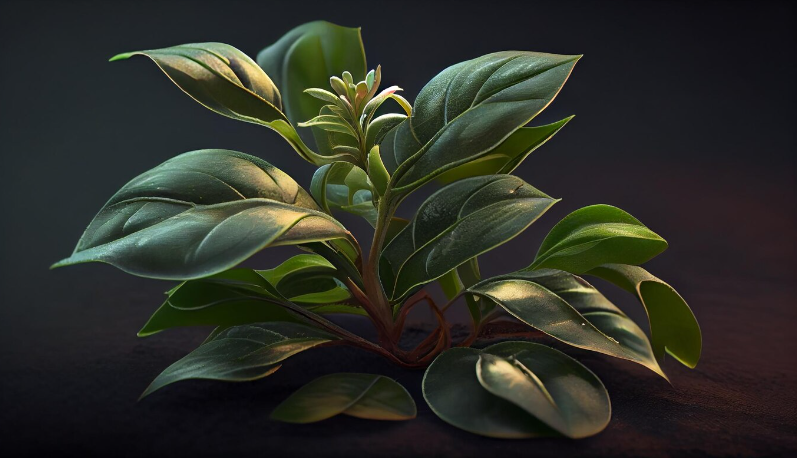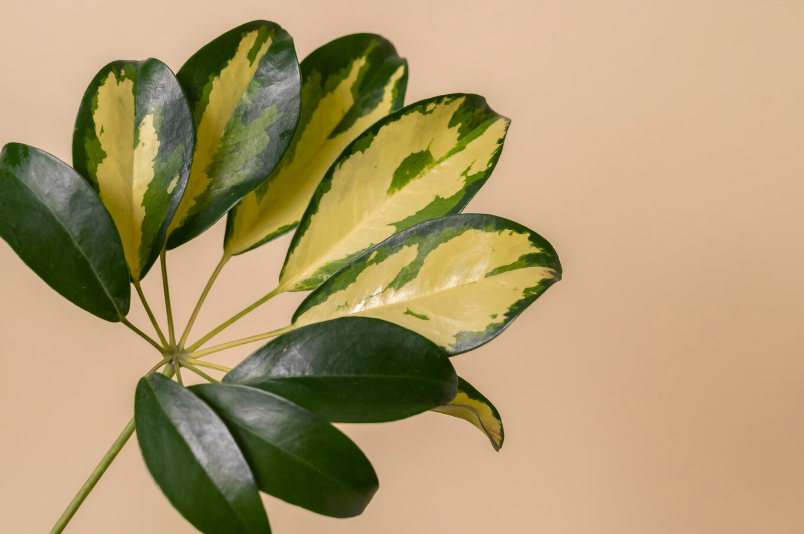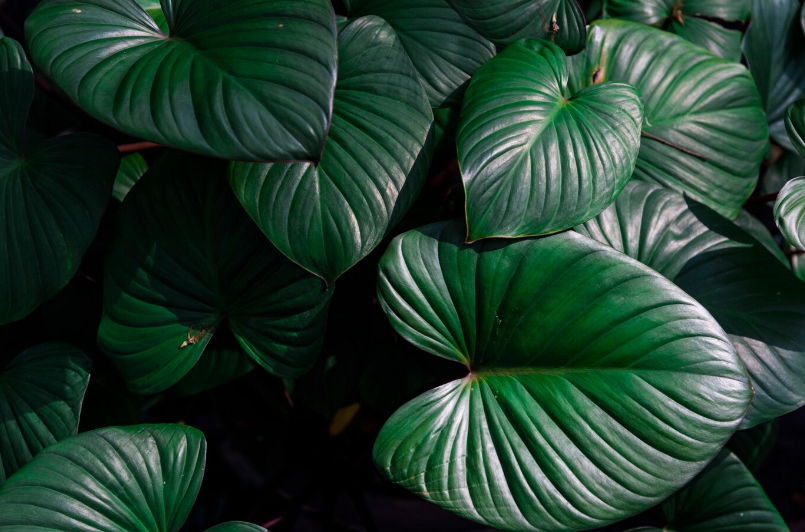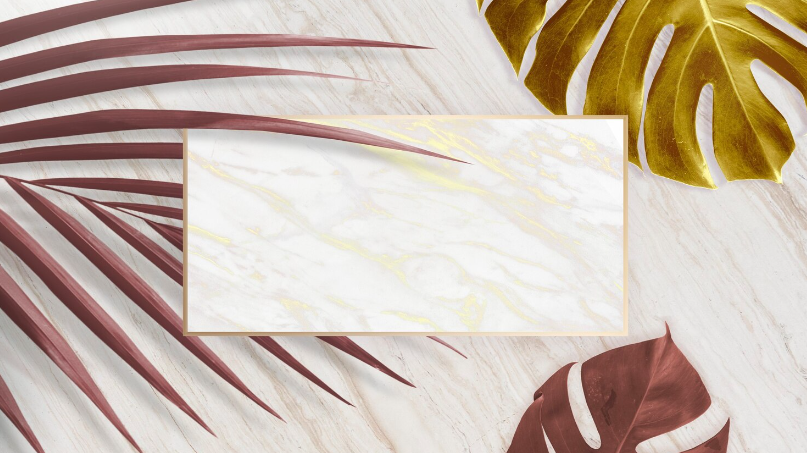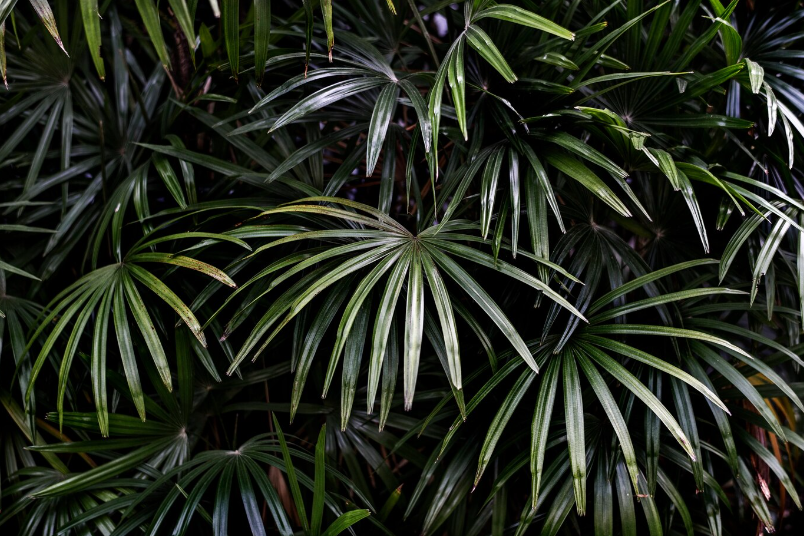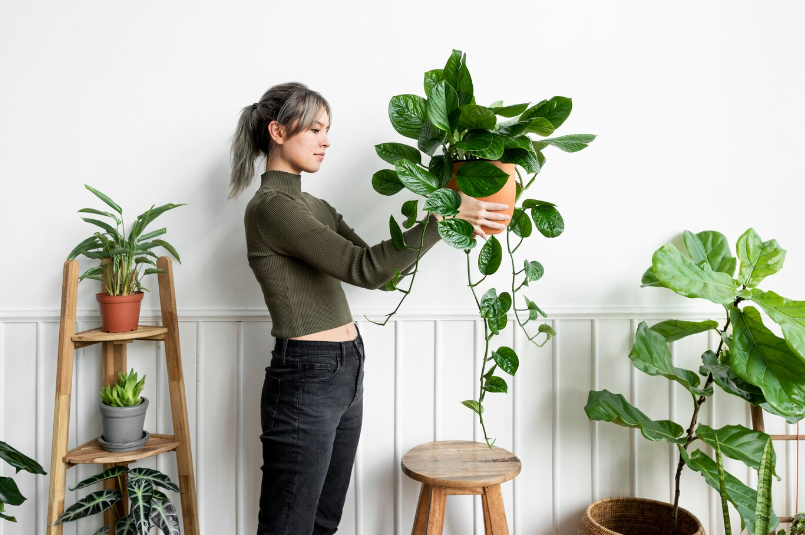An Introduction to the Philodendron Family
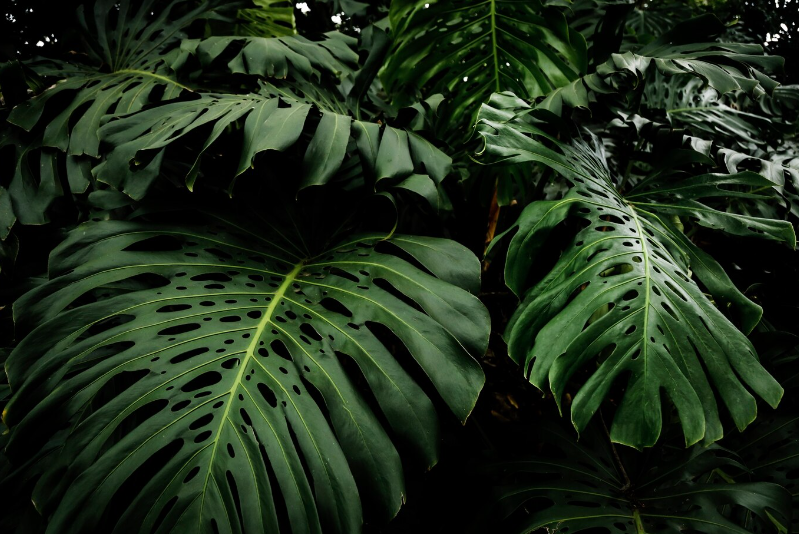
With their striking foliage and easy-care nature, Philodendrons are a popular choice among plant enthusiasts. This diverse family, known scientifically as Araceae, encompasses a wide range of species, each with its own unique characteristics and requirements.
Philodendrons are native to the tropical regions of Central and South America, where they thrive in the warm and humid climate. They are commonly found in rainforests, climbing on trees or growing on the forest floor. In the wild, these plants have adapted to life in low light conditions, making them ideal for indoor environments with limited sunlight.
One of the most distinctive features of Philodendrons is their impressive foliage. Their leaves come in various shapes, colors, and textures, ranging from heart-shaped and arrowhead-shaped to deeply lobed and split leaves. Some species even have leaves with stunning variegation, adding a touch of drama to any interior space.
Another reason for the popularity of Philodendrons is their ease of care. These plants are known for their low maintenance requirements, making them suitable for both beginner and experienced plant lovers. They can tolerate a range of light conditions, although they prefer bright, indirect light. Philodendrons also have a forgiving nature when it comes to watering, as they can withstand occasional droughts.
In conclusion, the Philodendron royal family offers a delightful array of plants that can add beauty and tropical vibes to any home or office. From their captivating foliage to their resilience, these plants have captured the hearts of many plant enthusiasts worldwide. Whether you’re a seasoned plant parent or just starting your indoor gardening journey, a Philodendron is an excellent choice for your collection.
What is the Philodendron Family?
The Philodendron family is a group of plants belonging to the Araceae family, which is one of the largest plant families in the world. It is a diverse family that includes over 480 known species, all of which are native to the tropical regions of Central and South America.
Philodendrons are popular houseplants because of their attractive foliage and low maintenance requirements. They are known for their large, glossy leaves that come in a variety of shapes, sizes, and colors. Some species have leaves with interesting patterns, while others have leaves that are heart-shaped or split into lobes.
One of the unique features of the Philodendron family is their ability to climb. Many species have aerial roots that allow them to attach themselves to trees and other surfaces, allowing them to grow vertically. This climbing ability makes them a great option for those looking to add greenery to small spaces.
In addition to their aesthetic appeal, Philodendrons also offer some health benefits. Like other plants, they help improve the air quality in your home by removing toxins and producing oxygen. Their large leaves also help to increase humidity levels, which can be beneficial for those living in dry environments.
Overall, the Philodendron family is a diverse and appealing group of plants that can bring beauty and health benefits to any home or office. Whether you’re a seasoned plant parent or just starting your green thumb journey, adding a Philodendron to your collection is definitely worth considering.
Defining the Philodendron Genus
The Philodendron genus is a large group of flowering plants that belong to the family Araceae. This genus is native to the tropical regions of America, primarily found in the rainforests of Central and South America. The name “Philodendron” is derived from the Greek words “philo” and “dendron,” which translate to “love” and “tree,” respectively, symbolizing the plant’s tendency to climb trees in its natural habitat.
Philodendrons are known for their striking foliage, featuring large, glossy leaves that come in a variety of shapes and sizes. The leaves can be heart-shaped, arrowhead-shaped, or split-leafed, among other variations. These plants are highly adaptable and are widely popular as houseplants due to their low maintenance requirements and ability to thrive in varying light conditions.
One of the key characteristics of the Philodendron genus is its ability to grow aerial roots. These roots emerge from the stem or branches of the plant and can be used for climbing or obtaining nutrients from the air or surrounding debris. Some species of Philodendron have velvety leaves, while others have leaves with intricate patterns or vibrant colors, making them visually appealing additions to any indoor or outdoor setting.
The Philodendron genus encompasses a diverse range of species, with more than 600 identified to date. Some of the most common species include Philodendron scandens, Philodendron bipinnatifidum, and Philodendron selloum. Each species within the genus has its own unique characteristics and growth habits, providing an array of options for plant enthusiasts to choose from.
Overall, the Philodendron genus is a fascinating and versatile group of plants that offer both aesthetic beauty and ease of cultivation. Whether used as decorative accents in homes and offices or as climbers in tropical landscapes, these plants are sure to captivate and enhance any environment they inhabit.
Characteristics of Philodendron Species
The Philodendron family is known for its diverse range of species, each with its own unique characteristics. Here are some of the common traits that can be found within the Philodendron species:
- Vining or Climbing Habit: Many Philodendron species are naturally vining or climbing plants. They have aerial roots that allow them to attach themselves to trees or other structures and climb upward.
- Large Leaves: Philodendrons are known for their large, glossy leaves that come in a variety of shapes. Some species have heart-shaped leaves, while others have elongated or lobed foliage. These leaves create a lush and tropical appearance.
- Asymmetrical Leaf Bases: The base of a Philodendron leaf is often asymmetrical, with one side extending further than the other. This characteristic can help to differentiate Philodendrons from other plants in the Araceae family.
- Aerial Roots: Philodendrons have aerial roots that emerge from the stem or nodes of the plant. These roots are used to anchor the plant as it climbs and absorbs moisture and nutrients from the surrounding environment.
- Flowering: While not all Philodendron species produce flowers, those that do typically have small, inconspicuous blooms. The flowers are often surrounded by a brightly colored leaf-like structure called a spathe, which attracts pollinators.
- Tolerance to Low Light: Many Philodendron species are known for their ability to thrive in low light conditions. They can adapt to a variety of light levels, making them popular houseplants for indoor spaces with limited natural light.
These are just a few of the characteristics that can be found within the Philodendron family. Each species has its own unique features, making it a fascinating group of plants to explore and cultivate.
The Philodendron Family: Genus or a Larger Group?
The Philodendron family is a large group of plants that belong to the genus Philodendron. However, there is some debate among botanists about whether the Philodendron family should be considered a genus or a larger group.
Traditionally, the Philodendron family has been classified as a separate genus within the larger Araceae family. This classification is based on the unique characteristics of the Philodendron plants, including their heart-shaped leaves and climbing growth habit.
However, some botanists argue that the Philodendrons share too many similarities with other plants in the Araceae family to be considered a separate genus. They propose that the Philodendrons should be classified as a larger group within the Araceae family, similar to how the orchid family (Orchidaceae) is classified.
Supporters of the genus classification argue that the Philodendrons have distinct characteristics and should be recognized as a separate group. They point to the diverse range of species within the Philodendron genus, which includes both climbing and non-climbing varieties.
Ultimately, the debate over the classification of the Philodendron family is ongoing. Further research and analysis will be needed to determine whether the Philodendrons should be considered a genus or a larger group within the Araceae family.
The Historical Significance of Philodendrons
The Philodendron family has a rich and fascinating history that dates back thousands of years. These tropical plants have a close association with human civilization and have played a significant role in various cultures around the world.
Philodendrons were highly revered by ancient civilizations such as the Maya and the Aztecs. These cultures believed that the plants possessed mystical and healing properties. In fact, the name “philodendron” is derived from the Greek words “philos” meaning love, and “dendron” meaning tree, indicating the love that these civilizations had for these plants.
Throughout history, Philodendrons have been used for medicinal purposes. The ancient Egyptians used extracts from the plants to treat symptoms of various ailments. The leaves of the Philodendron were believed to have healing powers and were used to make poultices and ointments.
In addition to their medicinal properties, Philodendrons have also been valued for their aesthetic qualities. The vibrant green leaves and intricate shapes of these plants have made them popular choices for ornamental purposes. They have been used to decorate temples, homes, and public spaces, adding beauty and a touch of nature to these environments.
| Period | Historical Significance |
|---|---|
| Ancient Egypt | Used for medicinal purposes |
| Maya and Aztec civilizations | Revered for their mystical and healing properties |
| Modern times | Popular ornamental plants |
Even in modern times, Philodendrons continue to be popular choices for indoor and outdoor gardening. Their ease of care and ability to thrive in various conditions make them a favorite among plant enthusiasts.
Overall, the historical significance of Philodendrons cannot be understated. They have not only provided medicinal benefits but have also brought beauty and a connection to nature to human civilizations throughout history.
Origins and History of Philodendron Cultivation
The Philodendron family originated in the tropical regions of Central and South America. These lush green plants have been cultivated for centuries and are highly valued for their ornamental foliage and easy-to-care nature.
Historically, indigenous tribes in these regions used Philodendrons for medicinal purposes. The leaves were often used to treat various ailments, including skin rashes and digestive issues.
As European explorers ventured into these regions in the 16th century, they discovered the beauty and versatility of Philodendrons. The plants were brought back to Europe and gained popularity among botanists and horticultural enthusiasts.
During the Victorian era, Philodendrons became highly sought-after houseplants. Their large, glossy leaves and trailing vines added a touch of tropical elegance to indoor spaces. Many varieties were introduced during this time, further fueling the demand for these plants.
In the 20th century, the popularity of Philodendron cultivation soared even higher. Technological advancements, such as greenhouses and tissue culture propagation, made it easier to grow and distribute these plants on a larger scale.
Today, Philodendrons are beloved by plant enthusiasts around the world. Their versatility and ability to thrive in a variety of environments make them a popular choice for both indoor and outdoor gardens.
Whether you’re a seasoned plant lover or just starting your green journey, exploring the origins and history of Philodendron cultivation can deepen your appreciation for these remarkable plants.
Evolution of Philodendrons Through Time
Philodendrons are a diverse group of plants that have undergone various evolutionary changes throughout their long history. The philodendron family, also known as Araceae, is believed to have originated in the tropics of Africa and South America millions of years ago.
As angiosperms, philodendrons belong to the flowering plant division, which first appeared around 130 million years ago. Over time, these plants have evolved to adapt to different environments and develop unique characteristics.
One of the notable evolutionary adaptations of philodendrons is their ability to grow in a variety of habitats, including forests, swamps, and even as epiphytes. This adaptability has allowed them to survive and thrive in different regions around the world.
Another important aspect of philodendron evolution is their reproductive strategies. While some species rely on wind pollination, others have developed specialized structures to attract specific pollinators such as beetles or flies. These strategies have contributed to the diversification of the philodendron family.
Furthermore, philodendrons have also undergone physiological changes to optimize their survival. For example, they have developed thick, waxy leaves to reduce water loss and tolerate dry conditions. Some species have even evolved aerial roots to support their climbing habit.
It is fascinating to observe how philodendrons have evolved over time to become the diverse group of plants we know today. From their origins in Africa and South America to their successful colonization of various ecosystems, philodendrons have proven to be highly adaptable and resilient.
As researchers continue to study the evolution of philodendrons, new discoveries are made, providing valuable insights into the fascinating world of plant adaptation and evolution.
Iconic Moments in Philodendron History
Over the years, the Philodendron family has had its fair share of iconic moments. From its introduction to the gardening world to its association with famous gardens, here are a few noteworthy moments in Philodendron history:
1. The Discovery of Philodendron
The Philodendron plant was first discovered in the tropical rainforests of Central and South America. Its unique heart-shaped leaves and ability to climb and attach itself to trees made it instantly fascinating to botanists.
2. The Introduction to Europe
In the 19th century, European explorers began bringing Philodendron plants back to Europe. It quickly gained popularity as an exotic houseplant thanks to its striking foliage and ease of care.
3. The Philodendron Monstera Deliciosa Craze
In the 1950s, the Philodendron Monstera Deliciosa, also known as the Swiss Cheese Plant, became a must-have for plant enthusiasts. Its large, fenestrated leaves became a symbol of interior design, and it remains popular to this day.
4. The Philodendron in Famous Gardens
From the World Botanical Gardens in Hawaii to the Royal Botanic Gardens in England, Philodendrons have found their place in famous gardens around the world. Their lush green foliage adds a tropical touch and helps create stunning displays.
5. The Philodendron’s Role in Air Purification
In recent years, the Philodendron family has gained attention for its air-purifying properties. Research has shown that these plants can help remove toxins from the air, making them not only beautiful but beneficial to our health as well.
These iconic moments in Philodendron history highlight the plant’s beauty, versatility, and enduring popularity. Whether in a tropical rainforest or our own living rooms, Philodendrons continue to captivate and inspire.
The Unique Aspects of Philodendrons
Philodendrons are a fascinating family of plants that exhibit several unique aspects. These aspects set them apart from other plant families and make them a popular choice among plant enthusiasts.
One unique aspect of philodendrons is their ability to adapt to different environments. They can thrive in both indoor and outdoor settings, making them versatile plants for any space. Whether you have a bright sunny room or a shaded patio, there is a philodendron species that will flourish in that environment.
Another unique aspect of philodendrons is their striking foliage. Philodendron leaves come in various shapes, sizes, and colors, adding visual interest to any room or garden. From heart-shaped leaves to elongated ones, philodendrons offer a wide range of leaf forms. Some species even have variegated or patterned leaves, making them even more captivating.
Philodendrons also have a unique method of growth. Many species are climbers, using aerial roots to attach themselves to trees or other structures. This ability allows them to reach for the light and grow upward. Some philodendrons can grow large and spread out, creating a lush and tropical atmosphere wherever they are planted.
Furthermore, philodendrons have a fascinating reproductive process. They produce spathes, which are large colorful bracts that cover the flowers. These spathes attract pollinators, such as bees and butterflies, facilitating the pollination process. Afterward, the spathes wilt, and the philodendron produces fruit that contains the seeds. This unique reproductive cycle adds to the allure of philodendrons.
In conclusion, philodendrons possess several unique aspects, from their adaptability to their striking foliage and climbing abilities. Their reproductive process also adds to their charm. If you are looking for a captivating and versatile plant, consider adding a philodendron to your collection.
Distinctive Features of Philodendrons
Philodendrons are a diverse group of plants known for their unique characteristics. While individual species may vary in appearance, there are several distinguishing features common to most philodendrons.
One of the most notable features of philodendrons is their heart-shaped leaves. These leaves come in various sizes and shades of green, and their shape is often associated with the love and affection they bring to their owners. The leaves can be glossy or matte, and some species may have variegated patterns or unique markings.
Another distinctive feature of philodendrons is their ability to climb and cling to surfaces. They have specialized aerial roots that allow them to attach themselves to trees or other structures. This characteristic makes them popular houseplants, as they can be easily trained to grow on trellises or moss poles.
In addition to their climbing abilities, philodendrons also have a unique way of reproducing. These plants can propagate through stem cuttings, where new roots and shoots sprout from the cut section of a stem. This makes philodendrons easy to propagate and share with others.
Philodendrons are also known for their adaptability and resilience. They can thrive in a variety of conditions, making them suitable for both indoor and outdoor cultivation. They are typically low-maintenance plants, requiring moderate watering and indirect sunlight.
Lastly, philodendrons are often praised for their air-cleaning properties. Like many other houseplants, they can help improve indoor air quality by filtering out pollutants and releasing oxygen. This makes them not only aesthetically pleasing but also beneficial to our health.
In conclusion, the distinctive features of philodendrons, such as their heart-shaped leaves, climbing abilities, unique propagation methods, adaptability, and air-cleaning properties, make them appealing and beloved plants for both beginners and experienced plant enthusiasts.
The Aesthetic Appeal of Philodendron Varieties
The Philodendron family is renowned for its stunning aesthetic appeal, with a wide range of varieties that can suit every taste and style. These plants are cherished by both amateur and professional gardeners alike for their lush foliage and unique shapes.
One of the most popular Philodendron varieties is the Philodendron Birkin, which is known for its striking white pinstripes on its dark green leaves. This variety adds a touch of elegance and sophistication to any indoor space.
For those looking for a more dramatic look, the Philodendron Black Cardinal is a perfect choice. Its deep burgundy leaves create a bold contrast against lighter-colored surroundings, making it a focal point in any room.
Another beloved Philodendron variety is the Philodendron Moonlight, which features vibrant neon-yellow leaves that brighten up any space. Its compact size and low maintenance needs make it an excellent choice for beginners or those with limited space.
If you prefer a climbing plant, the Philodendron Brasil is an excellent option. Its heart-shaped leaves are variegated with shades of green and yellow, creating a dynamic display as it climbs walls or trellises.
Lastly, the Philodendron Xanadu is a popular choice for its dense, bushy appearance. Its foliage consists of deeply lobed, glossy leaves that bring a tropical touch to any garden or interior space.
Overall, the Philodendron family offers a diverse range of varieties that cater to various preferences and styles. Whether you prefer a subtle and elegant look or a bold and vibrant statement, there is a Philodendron variety that will surely captivate your aesthetic senses.
Rare and Unusual Philodendron Species
Within the Philodendron family, there are several rare and unusual species that are highly sought after by collectors and enthusiasts. These unique plants boast stunning foliage and intriguing growth habits, making them stand out among other Philodendron varieties.
One such rare species is the Philodendron melanochrysum. This plant features velvety, dark green leaves with vibrant golden veins, creating a striking contrast. Its large, heart-shaped leaves and climbing vine-like growth make it an eye-catching addition to any indoor space.
Another coveted species is the Philodendron painted lady. This plant is known for its distinctive foliage, which starts out as a pale green and gradually develops beautiful pink and purple variegation as it matures. The colorful leaves of the painted lady make it a popular choice for plant lovers looking to add a touch of vibrancy to their collection.
The Philodendron gloriosum is another rare and sought-after species. This plant features large, velvety leaves with pronounced white veins running through them. Its unique leaf pattern and texture give it an almost iridescent appearance, making it a true showstopper.
One of the most striking and unusual Philodendron species is the Philodendron spiritus sancti. This plant produces elongated, finger-like leaves that grow in a twisted spiral pattern. With its unusual growth habit and deep green color, the spiritus sancti is a standout species that is highly prized by collectors.
Lastly, the Philodendron verrucosum is a rare species known for its velvety, dark green leaves with prominent white veins. Its compact growth habit and unique leaf texture make it a highly desirable plant for indoor gardens.
These are just a few examples of the rare and unusual Philodendron species that are highly sought after by plant enthusiasts. These plants not only add beauty and intrigue to any indoor space but also provide collectors with a unique and diverse range of foliage to enjoy.
The Popularity of Philodendrons
The Philodendron family of plants has become increasingly popular among plant enthusiasts in recent years. There are several reasons for their surge in popularity.
Firstly, Philodendrons are known for their striking foliage, which comes in a wide range of shapes, sizes, and colors. From heart-shaped leaves to varieties with variegated patterns, there is a Philodendron to suit every taste and style. Their lush greenery adds a vibrant touch to any indoor space, making them a favorite choice for interior decorators.
Secondly, Philodendrons are relatively easy to care for, making them suitable for plant lovers of all experience levels. These plants are adaptable and can thrive in a variety of light conditions, from bright indirect light to low-light environments. They also tolerate a range of temperatures, making them versatile options for different climates. With a little bit of attention and occasional watering, Philodendrons can flourish and beautify any home or office.
Additionally, Philodendrons are valued for their air-purifying properties. Studies have shown that these plants can help remove toxins from the air, improving the overall air quality of indoor spaces. This makes Philodendrons not only aesthetically pleasing but also beneficial for our health.
Lastly, Philodendrons are relatively easy to propagate, making them a popular choice for plant enthusiasts who enjoy sharing their greenery with others. With a simple process of rooting stem cuttings in water or soil, plant lovers can expand their Philodendron collection and share their love for these plants with friends and family.
In conclusion, the rising popularity of Philodendrons can be attributed to their stunning foliage, easy care requirements, air-purifying abilities, and ability to propagate easily. Whether you’re a seasoned plant enthusiast or just starting your plant journey, Philodendrons are an excellent choice for adding beauty and greenery to your indoor space.
Reasons Behind the Love for Philodendrons
The Philodendron family is beloved by many for a variety of reasons. These tropical plants have captured the hearts of plant enthusiasts around the world, and here’s why:
| Philodendron | 1. Beautiful and Varied Foliage: One of the main reasons behind the love for Philodendrons is their stunning foliage. With their large, glossy leaves in various shades of green, these plants add a touch of natural beauty to any space. From heart-shaped leaves to unique patterns, there is a Philodendron to suit every aesthetic. |
| Philodendron | 2. Low Maintenance: Another reason why people love Philodendrons is that they are relatively low maintenance. These plants thrive in a range of conditions and are forgiving when it comes to watering. They can tolerate lower light levels, making them suitable for different areas of the home or office. With their resilience, they are perfect for both experienced and beginner plant parents. |
| Philodendron | 3. Air Purifying Qualities: Philodendrons are known for their air-purifying qualities. These plants can help remove toxins from the air, improving the air quality in your home or workspace. Having Philodendrons around not only adds beauty to your environment but also contributes to a cleaner and healthier living space. |
These are just a few of the reasons why Philodendrons are so loved. Whether it’s their stunning foliage, easy care requirements, or air purifying abilities, these plants have found a special place in the hearts of plant enthusiasts everywhere. If you’re looking to add some greenery to your space, consider adding a Philodendron to your collection.
Philodendron Influence in Pop Culture and Design
Philodendrons, with their lush foliage and striking appearance, have made a significant impact in popular culture and design. These versatile plants have been featured in movies, television shows, and music videos, making them a symbol of elegance and beauty.
One notable example of the philodendron’s influence is in the world of interior design. The plant’s vibrant green leaves and ability to thrive in various environments have made it a popular choice for adding a touch of nature to indoor spaces. Philodendron plants are often used to create visually appealing living walls and are frequently seen in trendy cafes, boutiques, and hotels.
In addition to their presence in design, philodendrons have also become a staple in popular culture. These plants have made appearances in films such as “Jurassic Park” and “Jumanji,” adding an element of tropical allure to these fictional worlds. The inclusion of philodendrons in these movies showcases their ability to captivate audiences and create a sense of adventure.
Furthermore, the philodendron’s unique aesthetic has sparked inspiration in the realm of fashion and art. The plant’s distinctive shape and vibrant color have been incorporated into clothing designs, accessories, and even tattoo art. The philodendron has become a symbol of style and creativity, with artists and designers recognizing its timeless appeal.
Overall, the philodendron’s influence in pop culture and design cannot be ignored. Its captivating appearance and adaptability have made it a cherished plant in both fictional and real-world settings. Whether you see it in a trendy cafe or on the big screen, the philodendron continues to inspire with its timeless beauty.
Social Media and the Philodendron Trend
Social media has played a significant role in the recent surge of popularity for philodendron plants. Platforms like Instagram, TikTok, and Pinterest have created a space where plant enthusiasts can share their love for these beautiful houseplants.
One of the reasons why philodendrons have become so trendy on social media is their aesthetic appeal. The broad, heart-shaped leaves and vibrant green colors make philodendrons visually appealing and easy to photograph. Many people enjoy sharing pictures of their philodendron plants, especially when they are thriving and growing impressively.
Another factor influencing the philodendron trend on social media is their versatility. There are hundreds of philodendron species, each with its own unique leaf shape and pattern. This variety allows plant lovers to showcase different types of philodendrons in their collections, making for visually interesting and diverse content.
Additionally, social media has provided a platform for plant enthusiasts to share tips, tricks, and experiences related to philodendron care. People can easily ask questions or seek advice from others who have successfully grown philodendrons. This exchange of information has contributed to the growing awareness and popularity of philodendrons.
Overall, social media has played a significant role in popularizing the philodendron trend. It has allowed plant lovers to showcase the beauty and versatility of these plants, while also providing a platform for information sharing and community building within the philodendron enthusiast community.
Caring for Your Philodendron
Philodendrons are popular houseplants due to their attractive foliage and low maintenance requirements. To keep your philodendron healthy and thriving, follow these care instructions:
| Light | Place your philodendron in a bright location with indirect sunlight. Direct sunlight can scorch the leaves, while inadequate light can lead to leggy growth. A good rule of thumb is to provide your philodendron with bright, filtered light. |
|---|---|
| Temperature | Philodendrons prefer warm temperatures between 65°F (18°C) and 85°F (29°C). Avoid exposing your plant to temperatures below 55°F (13°C) as it can lead to leaf discoloration and damage. |
| Watering | Water your philodendron when the top inch of soil feels dry to the touch. Be sure to use well-draining soil and a pot with drainage holes to prevent waterlogging, which can cause root rot. It’s better to underwater than overwater your philodendron, as excessive moisture can lead to root problems. |
| Humidity | Philodendrons thrive in high humidity environments, but they can tolerate average humidity levels. To increase humidity, mist the leaves with water or place a tray filled with water near the plant. Avoid placing the plant near drafts or air conditioning vents, as they can reduce humidity levels. |
| Fertilizing | Feed your philodendron with a balanced liquid fertilizer every two to four weeks during the growing season (spring and summer). Dilute the fertilizer to half strength to avoid burning the roots. Reduce fertilization frequency during the dormant season (fall and winter). |
| Pruning | Prune your philodendron to control its size and shape, as well as to remove any dead or yellowing leaves. Use clean, sharp pruning shears and make cuts just above a leaf node. Regular pruning will help your philodendron maintain its compact and bushy appearance. |
| Pests | Watch for common houseplant pests, such as aphids, mealybugs, and spider mites, which can infest philodendrons. If you notice any signs of infestation, remove the affected leaves and treat the plant with an appropriate insecticidal soap or horticultural oil. |
By following these care guidelines, you can ensure that your philodendron remains a beautiful and healthy addition to your indoor space.
Essential Needs of Philodendrons
Philodendrons are tropical plants that are native to the rainforests of South and Central America. To ensure their health and well-being, it is important to understand their essential needs.
1. Light: Philodendrons thrive in bright, indirect light. They can tolerate low light conditions, but will grow more slowly and have smaller leaves. Avoid placing them in direct sunlight, as this can scorch their leaves.
2. Water: Philodendrons prefer consistently moist soil. It is important to water them when the top inch of soil is dry. However, be careful not to overwater, as this can lead to root rot. Use well-draining soil and allow excess water to drain away.
3. Temperature: Philodendrons prefer temperatures between 65°F (18°C) and 80°F (27°C). They can tolerate slightly lower temperatures, but it is best to keep them away from drafts and cold windows.
4. Humidity: Philodendrons thrive in humidity, so it is beneficial to increase the moisture levels around them. You can mist the leaves regularly or place a tray of water near the plant to create a humid environment.
5. Fertilizer: Philodendrons benefit from regular feeding with a balanced, water-soluble fertilizer. During the growing season (spring and summer), fertilize them every 4-6 weeks. In the dormant season (fall and winter), reduce the frequency to once every 8 weeks.
6. Pruning: Regular pruning helps to maintain the shape and size of philodendrons. Remove any dead or yellowing leaves, as well as any long or leggy stems. This will promote new growth and keep the plant healthy.
7. Potting: Philodendrons prefer to be slightly root-bound, so it is best to choose a pot that is slightly larger than their current one. Use a well-draining potting mix and repot them every 1-2 years or when the roots start to outgrow the pot.
By providing the essential needs of philodendrons, you can ensure that they thrive and bring beauty to your indoor space.
Tips for Growing Philodendrons in Water
If you want to try growing philodendrons in water, here are some tips to help you get started:
- Choose a healthy stem cutting: Look for a stem cutting that is about 6 inches long and has at least two mature leaves. Make sure to cut just below a node, which is where new roots will grow from.
- Prepare the cutting: Remove the lower leaves from the stem cutting, leaving only the top two or three leaves. This will help prevent the leaves from rotting in the water.
- Find a suitable container: Select a container that is large enough to hold the stem cutting without overcrowding. Transparent containers are ideal as they allow you to see the root development.
- Add water: Fill the container with clean, chlorine-free water. Make sure to cover at least half of the stem cutting with water.
- Support the cutting: Place the stem cutting in the container, making sure that the bottom end is submerged in the water. You can use stones or pebbles to provide support if needed.
- Place in a well-lit area: Find a bright spot in your home that receives indirect sunlight. Avoid placing the container in direct sunlight as this can cause the water to heat up and promote algae growth.
- Change the water regularly: Every 1-2 weeks, replace the old water with fresh, clean water. This will help prevent the build-up of bacteria and ensure that the roots have access to oxygen.
- Monitor root growth: Over time, you should start to see roots developing from the node of the stem cutting. Once the roots are about an inch long, you can transplant the cutting into a pot with well-draining soil.
- Continue care as normal: After transplanting, treat your philodendron as you would any other potted plant. Water it regularly, let the soil dry out slightly between waterings, and provide it with indirect sunlight.
By following these tips, you can successfully grow philodendrons in water and enjoy their lush foliage in your home.
Philodendron’s Role in Environmental Wellness
Philodendrons have large, glossy leaves that are highly efficient at filtering out toxins and pollutants from the air. They can remove harmful substances such as formaldehyde, benzene, and trichloroethylene, which are commonly found in household products, paints, and cleaning supplies. By absorbing and breaking down these pollutants, philodendrons help create cleaner and healthier air to breathe.
In addition to their air purifying abilities, philodendrons also contribute to the overall well-being of the environment. These plants have a symbiotic relationship with water, absorbing excess moisture from the air and releasing it back into the environment through a process called transpiration. This natural cycle helps to regulate humidity levels and maintain a balanced ecosystem.
Furthermore, philodendrons are easy to care for and can thrive in a variety of environments. Their adaptability makes them an ideal choice for green building projects and interior landscaping, where they can be used to create sustainable and aesthetically pleasing spaces.
Overall, philodendrons are not just beautiful additions to our homes – they are also important contributors to our environmental wellness. Their air purifying abilities and symbiotic relationship with water make them a valuable asset in creating cleaner and healthier living environments.
Q&A:
What is the Philodendron family?
The Philodendron family is a large group of tropical plants that belong to the Araceae family. They are known for their beautiful green leaves and easy care requirements.
What are some popular types of Philodendron plants?
Some popular types of Philodendron plants include the Philodendron selloum, Philodendron hederaceum, and Philodendron bipinnatifidum. These plants have different leaf shapes and sizes, but all share the same lush and tropical appearance.
How do I care for a Philodendron plant?
Caring for a Philodendron plant is relatively easy. They thrive in bright, indirect light and prefer to be kept moist but not soggy. Watering once a week and providing a humid environment will ensure the health of your plant. Additionally, regular fertilization and periodic pruning are recommended to keep your Philodendron looking its best.
Can Philodendron plants be grown indoors?
Yes, Philodendron plants can be grown indoors. In fact, they are popular houseplants due to their ability to thrive in the low light conditions typically found indoors. As long as they receive some indirect sunlight and are kept in a warm environment, they will do well indoors.
